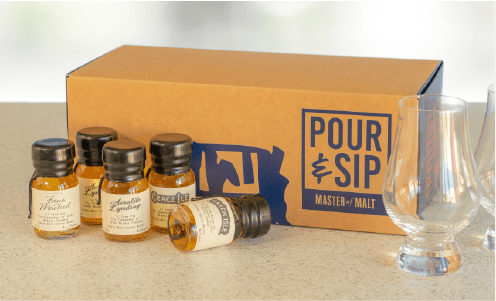Distillery visit - Lagavulin August 2022
Lagavulin distillery lies on the shores of Lagavulin Bay, close to Dunyvaig Castle on the south coast of Islay. The name Lagavulin comes from the Scottish Gaelic Lag a' Mhuilinn, meaning ‘hollow of the mill’.
Although Lagavulin officially dates back to 1816, Lagavulin has a claim to being one of the oldest distilleries in Scotland with records showing illicit distillation taking place on the site as far back as 1742. The site originally held two distilleries which were amalgamated in the mid-1800s.
Lagavulin’s history, especially it’s relationship during the early 20th Century with the neighbouring Laphroaig Distillery, is fascinating and could be best described as acrimonious and littered with legal battles . Lagavulin owner Peter Mackie, through his company Mackie & Co. (of White Horse fame), was also agent for Laphroaig. The two distilleries had a long-standing commercial commercial agreement which had stayed in place until the arrival of Ian Hunter to Laphroaig following the death of his uncle and Laphroaig owner Alex Johnston in 1907.
It’s said Hunter felt the agreement wasn’t in the best interests of Laphroaig as most of their output was being taken up by Mackie’s own blends. A bitter court case ensued, resulting in Mackie losing the rights to act as agent for Laphroaig. More legal action followed soon after, with Laphroaig taking him back to court to restore their water supply after an enraged Mackie had decided to block it by damming the stream.
Mackie then went one step further, building Malt Mill Distillery within Lagavulin. It’s claimed that it’s aim was to drive Laphroaig from the market by creating a copy of the Laphroaig whisky, going as far as poaching their staff. The project itself failed as Laphroaig and Lagavulin share neither peat or water supply, however Malt Mill continued to produce whisky for many years, contributing to Mackie’s blends including White Horse, before finally being closed in 1962.
In common with most distilleries these days, malting is no longer done onsite with Lagavulin decommissioning their floor maltings in 1974. Unsurprisingly, Lagavulin buy their malted barley in from Port Ellen Maltings, another part of the Diageo family.
They do still have their peat kiln in situ, although these days it’s just for the visitors.
 |
| The former peat oven |
The barley is transported to be milled and graded using their Porteus mill, before being sent for loading into the mash tun.
Lagavulin use a stainless steel Lauter tun for their mashing. Quite small in comparison to others on the island, the mash tun is run for longer and with slightly lower temperatures.
 |
| Mashing in progress |
The resultant wash is sent to one of their 10 Oregon Pine wash backs, mixed with liquid yeast and left for a fermentation period lasting around 55 hours.
 |
| Wash backs |
 |
| Keeping the local bird life at bay |
Lagavulin is known for its use of a slow distillation speed and pear shaped pot stills. The two wash stills have a capacity of 11,000 litres and the two spirit stills of 12,500 litres each.
 | |
|
The stills at Lagavulin are certainly distinctive. In addition to the pear-shape, the lyne arms have a pronounced downward angle, leading to less reflux which contributes to the flavour and texture of the spirit.
 |
| A distinct downward angle on the lyne arm |
That concluded the tour, so it was time for a short walk to the tasting session.
During the tasting session we got to try four different expressions, the 8 year old, the 2006 Distiller’s Edition, the 2018 Distillery Exclusive and the 2022 Fèis Ìle. Reviews of each are available on the individual links.
My first encounter with Lagavulin was with the 16 year old bottling many years ago. Back then it was a huge beast of a whisky, dominated by medicinal TCP. I was already a fan of Laphroaig so the phenolic iodine character of the peat was something I enjoyed, but I must admit the levels in the Lagavulin took me by surprise and it was several attempts before I began to fully appreciate it.
These days the 16 is a much milder creature, far more approachable if you don’t include the recent massive price hike. And so it was with these bottlings, whilst they were decent drams they felt like pale imitations of the Lagavulin of old. The tasting session itself had more of a focus on the softer side of the spirit, whereas previous tours and tasting have talked about that peaty heft with a sense of pride and individuality. More mass market appeal no doubt, but they left me a little underwhelmed and hankering for that robust, ‘proper’ Lagavulin that made it stand out.
Overall, a really enjoyable tour with more of a visitor focus than on previous visits. Our tour guide, Sheila, was knowledgeable and happy to answer even the most geeky of questions. During the tasting there was also a genuine interest in feedback for each of the whiskies and a much appreciated lack of a hard sell.
There’s a real old-school charm about Lagavulin, especially the leather wingback chairs and green panelled walls in the visitor centre. Diageo are upgrading many of their visitor centres, hopefully the character here will be retained.








